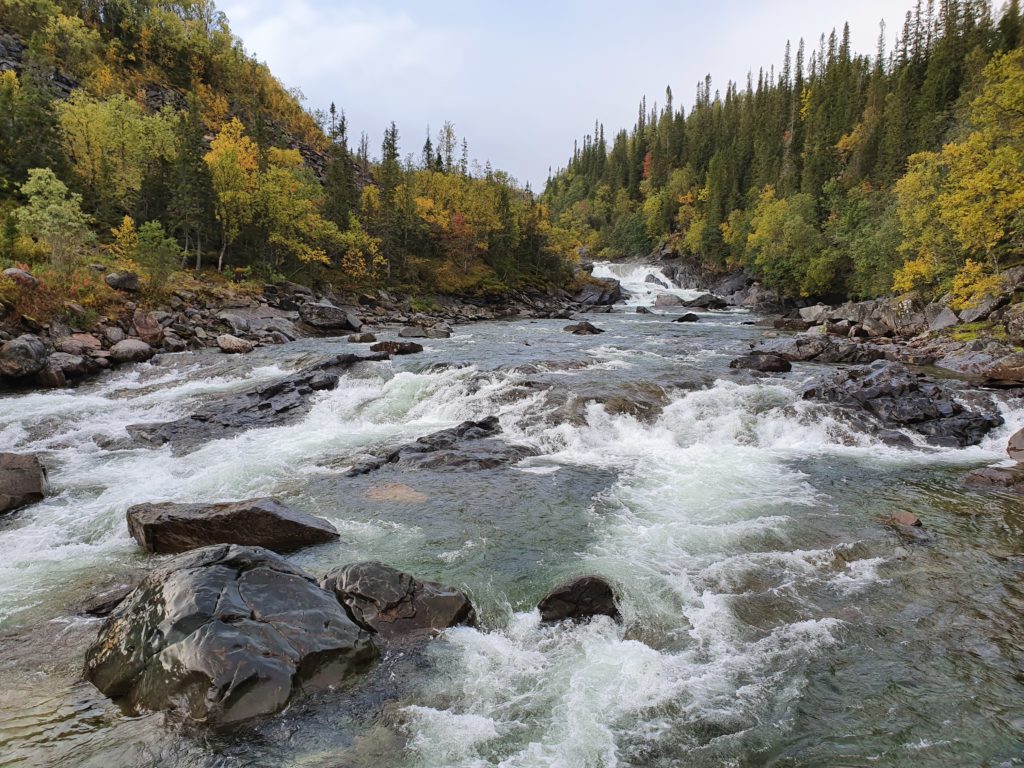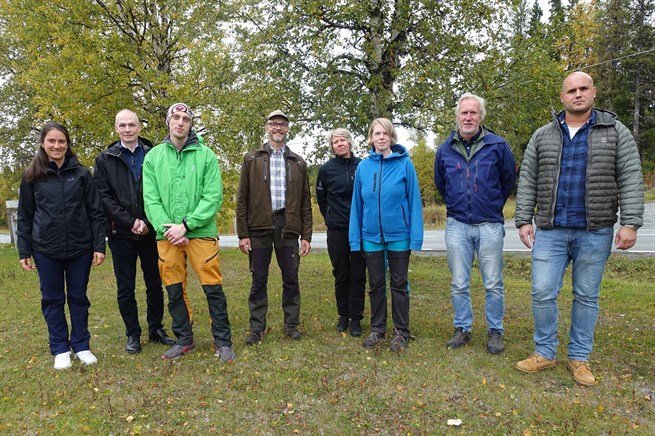AquaBiota is participating in the research project ECWA-NOR. The ECWA-NOR research project aims to ensure the quality of our streams through analysis and tracking of intestinal bacteria, eDNA and analysis of intergenomic regions.

Photo: Martin Andersson, Handölforsen
The gut bacteria Escherichia coli (E. coli) occurs in feces and can only survive for short time periods outside of the intestinal tract. The presence of E. coli in open water is thus a strong indication of faecal contamination in the close vicinity. Ingestion of E. coli can also lead to several serious diseases, which is why E. coli is routinely tested in drinking water.
In Östersunds drinking water, which originates in the well-known hiking trail Jämtlandstriangeln, an increase in E. coli bacteria has been observed since the early 2000s. This is a particular problem in hiking trails since hikers traditionally drink water directly from the streams. Despite that the increase in E. coli has been known for a long time, few sources have been identified and thus the possibilities for measures have also been limited.
To find sources of contamination, researchers in this project will sample and perform chemical and bacterial analyses in the upper parts of the Indalsälven river, upstream of Storsjön and in the mountain areas towards the Norwegian border.
This will include the application of several advanced methods. The most central and recurring is the sampling and cultivation of E. coli to assess the concentrations and how they vary in time and space across the catchment area. eDNA samples will also be taken from streams, with the aim of correlating variation in eDNA signal strength (among species) with variation in E. coli concentrations.
The most ground-breaking part is the probably the analysis of intergenic regions of E. coli. These regions correlate with the selection to different intestinal systems and thus indicates the host animal from which the bacterium originates. For this to succeed, a machine learning model needs to be trained on bacteria whose host-origin is known. For this purpose, E. coli samples from various host-animals are retrieved from the field, treatment plants, and downloaded from the gene bank. Once the model is trained E. coli samples from the streams will be tested against the model to see which host that gets the closest match, and thereby indicating its origin. This methodology is inspired by a Canadian research group from the University of Alberta who developed the methodology and has provided valuable advice to the project.
The project is a collaboration between Mid Sweden University, AquaBiota, Hjortens laboratorium, and MoRe research. Supporting organizations includes the County Administrative Board of Västernorrland, Åre municipality and the water treatment plants in Åre och Järpen.

From left:
Sharon Maes, Mid Sweden University; Robert Lundqvist, Hjortens laboratorium AB; Martin Andersson, AquaBiota Water Research; Anders Jonsson, Mid Sweden University; Annika Lundmark, County Administrative Board Västernorrland; Jessica Sjöstedt, MoRe research AB; Ingemar Näslund, County Administrative Board Västernorrland; Daniel Fackel, Municipality of Åre